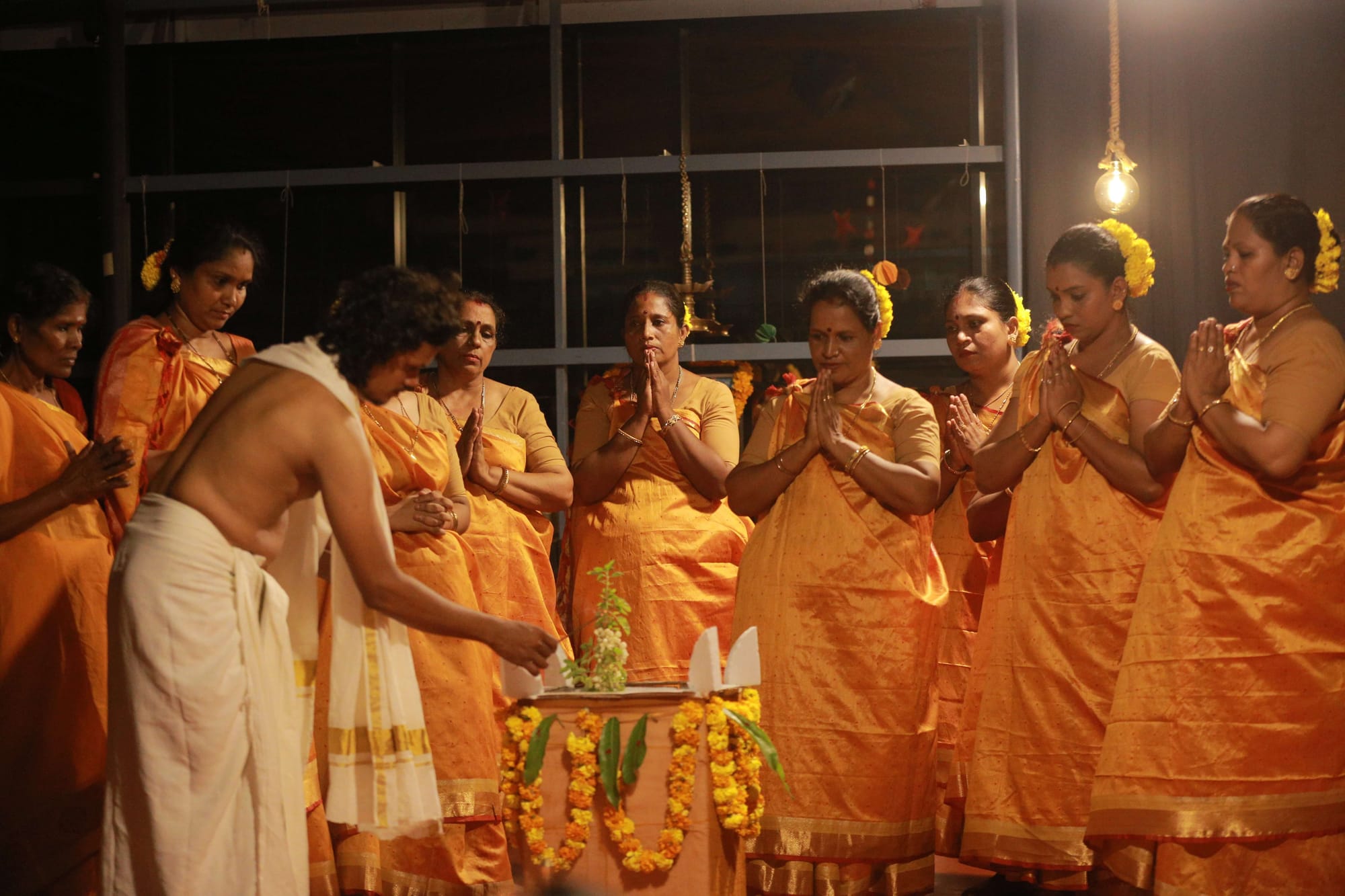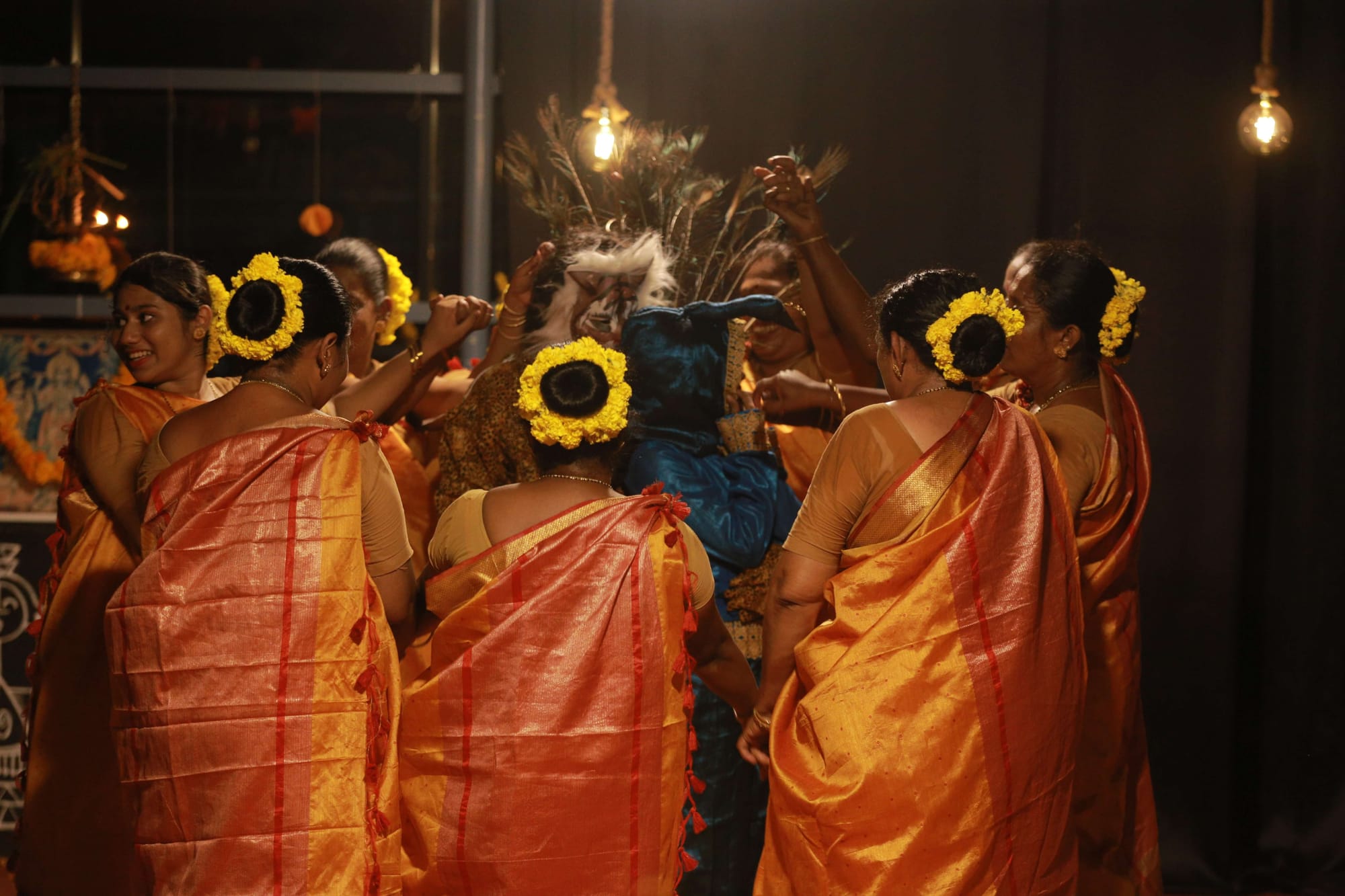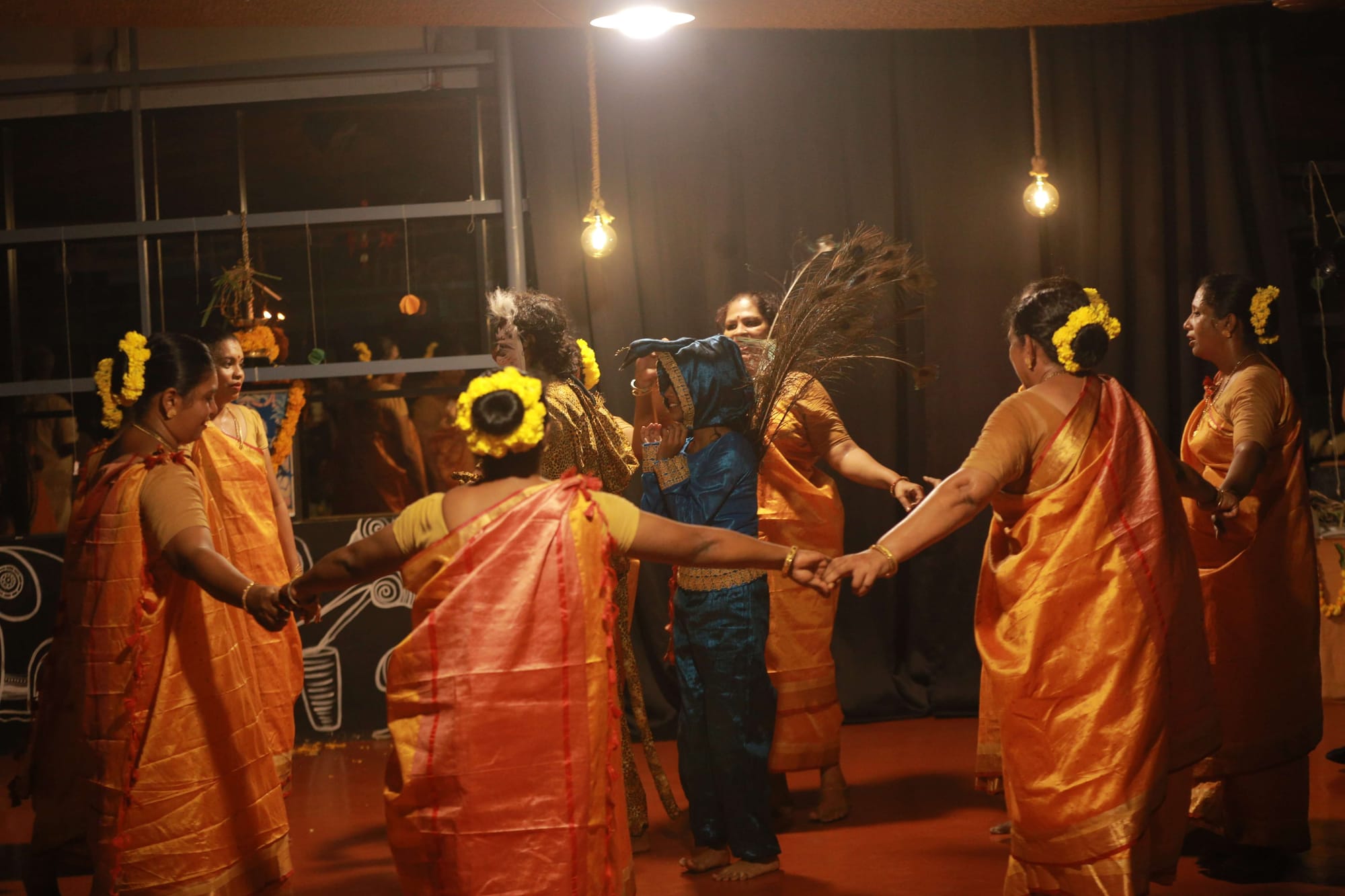Meow, my dear readers of Cats of Kochi, it is me, Bandit! The tripod of this household (not only do they depend on me for taking high-quality pictures, but I also have three legs).
I was doing my weekly getaway from the house of Cats of Kochi. Instead of going to my usual Fort Kochi area (I have some feline friends there, you know, I’m quite popular on Catstagram), I went to the twin town of Mattancherry. Hunting for some fish to eat, I was jumping from terrace to terrace when I heard:
“Chamba gada fuguda, ey chamba gada fuguda!”
Overcome by curiosity at hearing some hoomans sing this, I climbed a house to look for the source. Let me describe to you what I saw: A group of women standing in a circle – dancing and singing and clapping!
I was immediately enamoured. Some of the women came near me and started giving me my absolutely favorite chin massages. I chose the owner of the most comfortable hands for pets and made them my hooman of the day.
“Meow” I went and said to the lady. She smiled at me and gave me another chin scratch.
“Close enough, my name is Maya, not meow” she told me. The other women went back to their dancing, and Maya-hooman started singing in a melodious voice. From my feline friend Ginger, I had heard a lot about Kathakali which is a dance-drama that originates from Kerala. I’m also very curious about art in general (you can check my work on Chavittunadakam for proof!) so this dance/music/performance was very compelling and I wanted to know more.
Maya-hooman did not even hesitate to tell me about it! She is from the Kudumbi community of Kerala. They are a Konkani-speaking group of people whose ancestors fled from Goa during the forced conversion of Portuguese colonialism. I told her that I’m from the Black Cat community of Kochi, currently staying with a hooman. The song she was singing is part of Fugudo – a traditional folk dance of the community they have been practising for ages. It is not very popular in mainstream dance cultures. With my interest sufficiently piqued at discovering a new community and culture in Fort Kochi, I immediately asked for an on-the-spot interview. (I’m quite known for my interviews, I did one on the Water Metro with an old friend of mine, Luna).
Me: Meow, can you paint me a picture of this dance?
Maya: I guess I need to change my name from Maya to Meow soon, haha! But to answer your question, the Fugudo dance starts with the lighting of a lamp. We, the women of the community, do a small ritual before we start the performance. Then, I sing on various themes to which the dancers put up a lively performance. At the end of all performances, we have the Marauli. We call it the climax of the dance. If you come to watch our performance one day, then that’s the experience you’ll get to see. The music is accompanied by the instruments dholak and chenda. The attire is a saree draped in a unique way.

Me: Oooh, this is all so new to me. I have heard of the dance from Goa called Fugdi, are these two dances related?
Maya: In a way, yes. Fugdi is the dance performed by the Konkani-speaking communities of Goa and Maharashtra. You know how a dance, like any object, melds with the changes in its environment. In a similar way, the Fugdi dance has elements of Portuguese culture embedded in it because of its colonial history. Our Fugudo may have the same roots, but they are entirely different traditions and practices changed by geographical and linguistic differences.
Me: So what language are the songs sung in? Is there perhaps a cat translation?
Maya: With your help, I could surely work on a cat translation. The songs are in Konkani but not in the present-day modern language spoken in households today, but in the style of Old Konkani spoken ages ago. Since it’s an oral tradition of passing down folk songs and dances, the essence of the older language is maintained. I personally feel like with translation, the ‘soul’ of these songs will be lost. The rhythm and flow are untranslatable. Although I could still explain to you the meaning and interpretations.
Me: I would love to meow the Fugudo songs and sing them to my feline friends! What are these songs about?
Maya: The main theme is usually farming or agricultural practices. The word ‘Kudumbi’ also means the same. We also sing songs about women’s domestic experiences, devotional hymns of our god Bhagavathy, everyday life and food habits. The last song is called Marauli and it is a climactic piece about the victory of good over evil. In this dance, a peacock is chased by a leopard and the dancers try to protect the peacock from the leopard. The performance always ends with a Marauli.


The Marauli of Fugdo (credits: Thudippu Foundation)
Me: I cannot wait to come and watch your performance one day! Can you teach me to sing and dance?
Maya: Of course, I do teach some children from the community who are interested in Fugdo. I'm sure I can accommodate a cute cat like you. If you want to watch us, I have a video of our performance. Here you go:
And my credits to the Thudippu and ARPO for helping us with the performance!
Me: Thank you Maya-hooman for this wonderful and insightful conversation. I hope more people discover this beautiful dance tradition.




